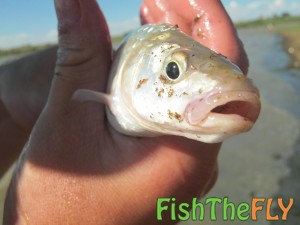Vaal-Orange Largemouth Yellowfish On Fly In South Africa
How To Catch The Largemouth Yellowfish On Fly
Largemouth Yellowfish on fly are known as the fish of a thousand casts, and are one of the most prized targets on a fly fishing setup in South Africa. The Largemouth Yellowfish (Labeobarbus kimberleyensis) are known affectionately as Largies, and are one of the hardest and most frustrating freshwater fish species to target on a fly fishing rod and reel, or any tackle actually, which makes them such a big prize in many anglers eyes. They are distributed throughout the Vaal and Orange River systems as well as large tributaries and dams such as Vanderkloof and Sterkfontein.
This species of the Largemouth yellowfish is vulnerable, and is becoming increasingly scarce due to illegal netting, long lining, water abstraction and water pollution. These are the main threats the to the populations of the Largemouth Yellowfish.
More Information On The Largemouth Yellowfish
Largemouth Yellowfish on fly are a great fish to try and catch. Many people wonder how to tell the difference between smallmouth and largemouth Yellowfish? This is a tough one… Generally it is almost impossible to tell the difference between the two Yellowfish species when they are smaller. As they grow larger, the Largemouth Yellowfish becomes more distinct with it’s larger more upward pointing mouth. The eyes on the Largemouth Yellowfish are also situated more towards the top of the head, compared to the Smallmouth Yellowfish where the eyes are more on the side of the head. You can see this by looking up at the fish, which is easier said than done. The adult Largemouth Yellowfish has a larger head and a more prolonged mouth area. It is very tough, and is best to consult someone if you are 100% unsure. You can contact us if you want some help.
The Largemouth Yellowfish will feed on a variety of insects, insect larvae, plankton, algae and other organisms until it reaches a weigh of about 1.5 kilograms. They then become almost exclusively piscivorous, but will still take crustaceans and crabs and so forth. They are slow growing fish, which could be another reason for their scarcity. It is reported that they attain lengths of 30 centimeters or so only after 5 years. Quite scary when you think about it. The adults can be found around rocks and other forms of structure in deep water in dams, and deep slow moving pools in rivers, generally deeper than two meters. Overhanging trees and cliffs also offer something to the Largemouth Yellowfish and they can be found here as well. They are both schooling fish, where they hunt in packs, and singular fish. They breed during the peak of Summer in faster moving water, similar to the other species of Yellowfish that spawn, between November and January.
The Largemouth Yellowfish should always be released, they are slow growing and are only able to spawn and breed after 8 years of age when they are just 45 centimeters in length. They can live for longer than 12 years, especially the larger specimens of 10 kilograms and more. The angling record is close to 23 kilograms, which was caught in October 1956… I am sure we will see this record broken soon, as long as we release and conserve the Largemouth Yellowfish.
The Largemouth Yellowfish is the largest scale baring fish in South Africa, and of course is the largest of all Yellowfish species. Read more about the Yellowfish season here.
Fly Fishing For The Largemouth Yellowfish On Fly In South Africa
As a result of the Largemouth Yellowfish’s eyes being on top of it’s head, as mentioned above, fly fishing for them needs to be done in such a way where they will be able to see the fly you are using. This is why I would controversially say that you should stay away from sinking line. Many fly fishermen catch the Largemouth Yellowfish on sinking line, but I believe you have a better chance on floating or intermediate line. You have more of a chance of that fish seeing your fly this way.
Tackle wise, anything lighter than a 7 weight fly fishing setup is generally suicide. These fish are strong, ask the Smallmouth Yellowfish anglers who have hooked them on a 5/6 weight. Ideally I would target them with a 9 weight rod and reel with lots of backing. This fish will fight you to death if it could. Long leaders are needed, preferably tapered , with a 20lb tippet, yes a 20lb tippet! The leader needs to be at least 10-15 feet, as Largemouth Yellowfish are often line shy, so the heavier your tippet, the longer your leader…
Natural coloured “buggy” and bushy flies are best used for the Largemouth Yellowfish. Black, Black/Red, olive Green and Brown seem to work the best in terms of colour. White can also produce some good results. Listed below are the best flies we have identified to use when fly fishing for the Largemouth Yellowfish.
- Walkers Killer
- Mrs Simpson
- Fritz
- Fritz Bugger
- Woolly Bugger
- Deer Hair Mouse
- Zonker
- Lefty’s Deceiver
- Clouser Minnow
- Brush Fly
Crab imitations and topwater flies also work quite well.
Follow Us On Social Media... Fish The Fly knows how everyone loves updates, photo's and videos, so keep updated with all the latest fly fishing news from South Africa below!


